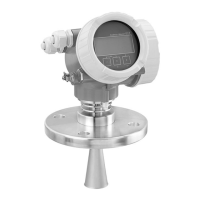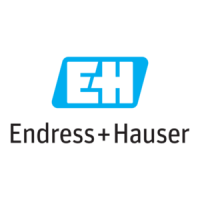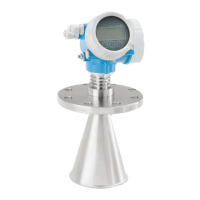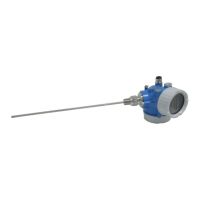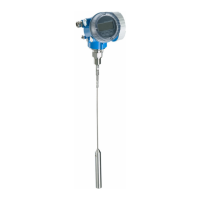Do you have a question about the Endress+Hauser Micropilot FMR67B and is the answer not in the manual?
Explains the document's scope, safety symbols, and information graphics.
Defines terms, lists documentation types, and registered trademarks.
Specifies personnel qualifications, device application, and incorrect usage.
Covers workplace, operational, product safety, and device-specific IT security measures.
Illustrates and labels the components of the Micropilot FMR67B.
Provides a checklist for device verification and explains identification methods.
Details conditions for storing and transporting the device safely.
Provides general guidelines, warnings, and requirements for mounting the device.
Describes mounting for horn and flush mount antennas, including alignment and nozzle specs.
Details turning the display module and adjusting housing components.
Lists checks for device condition, identification, protection, and compliance with specifications.
Covers requirements for securing covers, potential equalization, and cable glands.
Details cable cross-sections, outer diameters, and PROFINET/Ethernet-APL specifications.
Provides wiring steps, terminal assignments for different housings, and cable entries.
Covers cable entries and M12 plug protection classes for maintaining IP rating.
Lists methods for operating the device: keys, display, Bluetooth, Web server, tools.
Explains how to operate the device using the optical keys on the display.
Guides on accessing the device via web browser and its requirements.
Guides on connecting operating tools via PROFINET with Ethernet-APL network.
Details description files (GSD, FDI, DTM) and lists available operating tools.
Explains the GSD file for bus system integration and how to download it.
Covers startup configuration parameters and requirements for system redundancy.
Covers preliminary checks and the function check before device commissioning.
Guides on establishing connections via PROFINET and service interfaces.
Details device name, IP address, and communication parameter configuration.
Explains how to set operating language and configure device parameters.
Explains how to read device locking status and measured values.
Details menus for basic and advanced settings to match process conditions.
Provides guidance on common errors, values not visible, and communication issues.
Troubleshoots problems with Bluetooth/SmartBlue operation, including connectivity.
Explains how faults are detected and displayed as diagnostic messages with status signals.
Details how to view event history, filter messages, and access remedial measures.
Provides notes on cleaning the device, emphasizing agent compatibility and protection.
Recommends periodic replacement of process seals based on usage and conditions.
Outlines the Endress+Hauser repair concept and procedures for Ex-certified devices.
Explains how to identify and order spare parts using the device serial number or QR code.
Covers component replacement, return procedures, and proper disposal of the device.
Describes 316L and plastic weather protection covers and their applications.
Details adjustable flange seals for various flange sizes and their technical data.
Describes M12 sockets (straight/angled) and cables, including material and protection.
Covers remote display, gas-tight feedthrough, and configuration tools like Field Xpert.
Details measured variable, maximum measuring range for different antennas, and usable measuring range.
Describes PROFINET-APL output, signal on alarm, and linearization functions.
Specifies ambient temperature range, operating conditions, and climate class.
Explains how ambient temperature limits depend on housing and process temperature.
| Category | Radar |
|---|---|
| Measurement Principle | FMCW radar |
| Frequency | 80 GHz |
| Housing material | Aluminum, Stainless steel |
| Accuracy | ± 1 mm |
| Output Signal | 4...20 mA HART, PROFIBUS PA, FOUNDATION Fieldbus |
| Communication Protocols | HART, PROFIBUS PA, FOUNDATION Fieldbus |
| International explosion protection certificates | ATEX, IECEx, FM |
| Protection class | IP66 |
| Device Type | Micropilot FMR67B |
| Process Temperature | -40 to +200 °C (-40 to +392 °F) |
| Application | Level measurement in liquids and solids |

